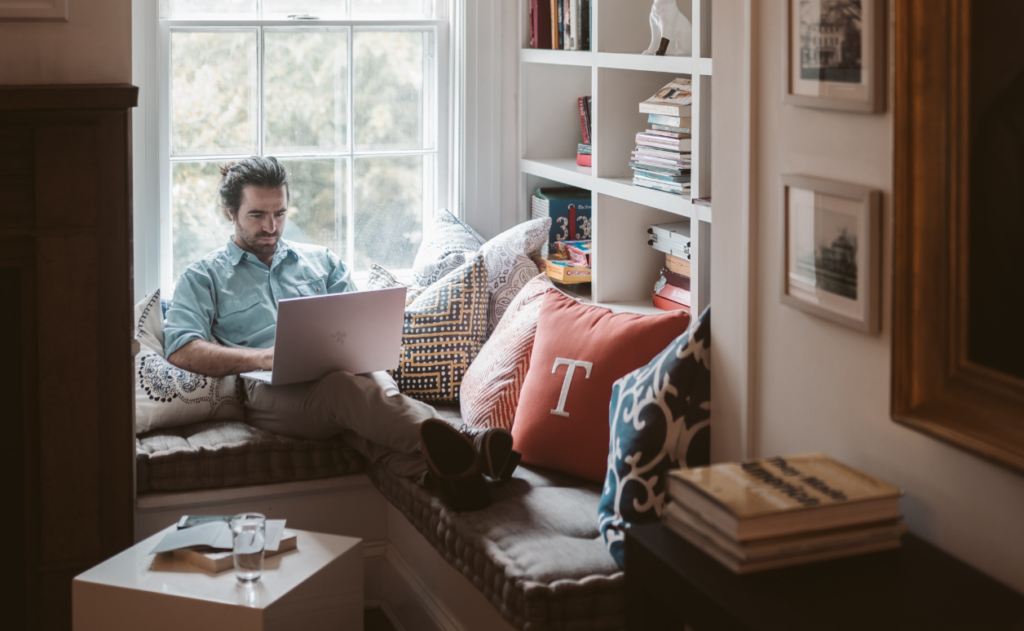
Whether it’s at home, the office, or driving our cars, today we spend up to 90% of our time indoors.
Especially during the time of Covid-19, more of us have been spending more time indoors than ever before—perhaps up to 100% of it! Unfortunately, so much time indoors goes against our evolutionary programming and has consequential implications for our health and wellness.
Our health is determined by how we behave, and how we behave is influenced by our physical environment. Sound, light, temperature, air and water are all essential life elements that determine the quality of our health and well-being.
Unlike healthy behaviors such as exercise that require active engagement, our relationship with these elements is intuitive.
Nowadays, our access to these elements is determined by what combination of them is available in our indoor spaces. In other words, our indoor environments determine what sound, light, temperature, air and water we get and, by extent, our long-term health.
The importance of good lighting
More than just something to make a room brighter, lighting is actually a tool we can use to improve our productivity, energy and focus.
Good lighting is important for everyone to support optimal functioning. Mood, sleep, and metabolism can all be improved by good lighting. Particularly during the darker, winter months, when necessary exposure to sunlight is hard to come by, good indoor lighting can help us maintain healthy circadian rhythms.
Humans evolved under the sun, so it’s natural that the move indoors would disrupt some of our health programming. The circadian rhythm is the body’s natural programming to function on a cycle matching the solar day. It governs many aspects of our physiology, metabolism, and behavior. Daily, regularly-timed exposure to light helps us maintain a healthy circadian rhythm.
Daytime light exposure can boost how you function and feel during the day, as well as help you achieve a more restful and restorative sleep at night.
That said, keep the lighting to a minimum at night. While bright light is good for us during the day, the opposite is true at night as it can be disruptive to your circadian rhythm. If you’re working at night, opt for dimmer lighting and switch the blue-light off your devices.
Beware of indoor air quality
When you think of pollution, you probably think of the air outdoors. But, indoor air can carry pollutants as well.
Pollution has been linked to a wide array of respiratory problems as well as the development of chronic conditions, among other negative health outcomes.
This means that it’s important to make sure the air you’re breathing at home is as healthy as possible. Improved indoor air quality promotes health and well-being, while reducing the risk of respiratory issues.
To ensure better air quality at home, it is important to make sure that your space does not lack fresh air. This can be done via a mechanical ventilation system or naturally, through keeping an open window or door. Keeping fresh air in your home prevents your air from having too high of a CO2 level.
Air purifiers can also help ensure your air is kept free from pollutants. Also useful are indoor air quality sensors which are able to measure pollutant levels in your air, so that you know when it’s necessary to let fresh air in.
We all need safe drinking water
Humans need water to live. But, water can also contain a range of pollutants and microorganisms that can negatively affect health in a wide variety of ways, from gastrointestinal problems to cancer.
For people in the United States, requirements established by the 1974 Safe Drinking Water Act (SDWA) set protective standards that limit the presence of certain harmful contaminants in drinking water, making drinking water in the U.S. among the safest in the world.
Ensuring that the water we use and consume is safe and clean involves reducing the levels of contaminants at both point-of-entry and point-of-use.
Want to make your indoor space healthier?
Check out this blog.